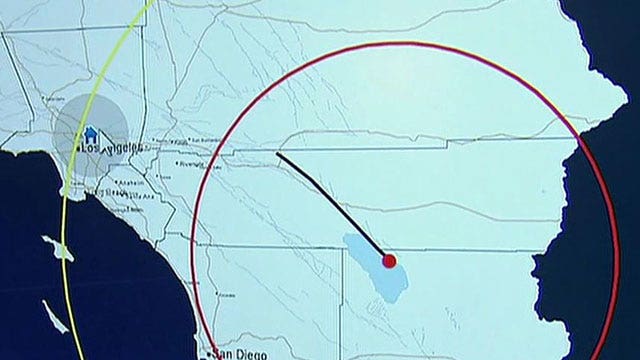The big one. Three words every Californian knows all too well.
"The earthquake is inevitable. The only question is when," said Lucy Jones, a seismologist with the U.S. Geological Survey. "It might not be another 50 years. Maybe even 100. Chances of us making it through the 21st century without the earthquake is very small.”
Jones is heading up a new effort by Los Angeles mayor Eric Garcetti to prepare the city for what experts say is unavoidable: a massive quake similar or worse to the one that hit the city in 1994.
The magnitude 6.7 Northridge earthquake claimed 57 lives and left $20 billion worth of damage in its wake, making it one of the costliest natural disasters in U.S. history. Jones warned the next one will likely have a similar impact.
She estimated the death toll from a quake with a magnitude 7.5 or higher could approach 2,000. That is a figure echoed by California's Democratic Governor Jerry Brown.
"There's a better than 50-50 chance that we'll have a catastrophic earthquake in California that will kill thousands of people and be enormously fiscally devastating," said Brown in January, when he unveiled his proposal for $1.49 million in funding for a fault mapping project.
He specifically told Los Angeles residents to be cautious.
A study conducted by the Los Angeles Times in 2013 found the city houses more than 1,000 concrete buildings at risk of collapse from a major earthquake because they lack steel reinforcement.
Jones said while it is expensive for owners to upgrade their construction, in the long term it makes financial sense. One city initiative would create a first-of-its-kind seismic ratings system for buildings, which she said could increase property values.
She said currently there is no monetary incentive for owners with buildings that meet or go beyond the current building safety codes.
"If you build a building strong enough that you can actually use it after an earthquake, you're throwing away your money," Jones said. "You cannot sell that building for any more than someone who is at the bare minimum to meet the code. With a rating system, you can certify this is a strong building.
"You're going to be able to go to work the day after the earthquake and give a mechanism for people to invest in stronger buildings and get their money back."
Democractic Los Angeles city council member Tom LaBonge said he thinks additional funding to help owners update their existing properties is more effective than a rating system.
"I support a statewide bond to have old buildings be upgraded," said LaBonge, who also wants to see a similar bond for residential owners.
The Northridge quake either damaged or destroyed 449,000 homes and apartment buildings. One big difference between now and then is that fewer homeowners have earthquake insurance.
"Financially, homeowners are woefully unprepared for a major disastrous earthquake" said Glenn Pomeroy, CEO of the California Earthquake Authority, an agency established by the state legislature to sell earthquake insurance from participating insurance companies.
In 1994, 40 percent of homeowners were covered by earthquake insurance. Now, it's just 10 percent, according to Pomeroy.
"Really it all goes back to 1994 when Northridge struck," Pomeroy said. "[Insurers] didn't want to insure this risk anymore. Rates doubled or tripled, coverage was reduced by half. Fast-forward 20 years. It's still an expensive risk to underwrite."
Cost is one reason many California homeowners forgo this coverage. Deductibles can be as high as 20 percent of a home's value.
Pomeroy also said there is a misconception that earthquake coverage is included in a typical home insurance policy. Similar to the extra flood insurance available in areas that experience hurricanes and high waters, it usually needs to be purchased separately at an additional cost.
But in terms of safety, La Bonge said he believes Los Angeles will be ready.
"I have trust in the engineers and the architects who designed these buildings," La Bonge said. "A building can fail after an earthquake but as long as it doesn't pancake, that's an earthquake-safe building."
Early warning is also key. The California Institute of Technology’s Seismology Laboratory has developed an early warning system that could alert residents up to 45 seconds beforehand that an earthquake is coming.
But that system still needs additional monitoring stations, software upgrades and $16 million a year to run, which Cal-Tech does not have from either the state or federal government. Jones said it would be money well spent.
"Mexico City invested after 10,00 people died. Japan invested after 6,000 died in the Kobe earthquake,” Jones said referring to the 1985 8.1 magnitude Mexico City earthquake and the 6.7 earthquake that hit Japan in 1995. “I just hope that we can be the country that goes to the system before we kill everybody."


